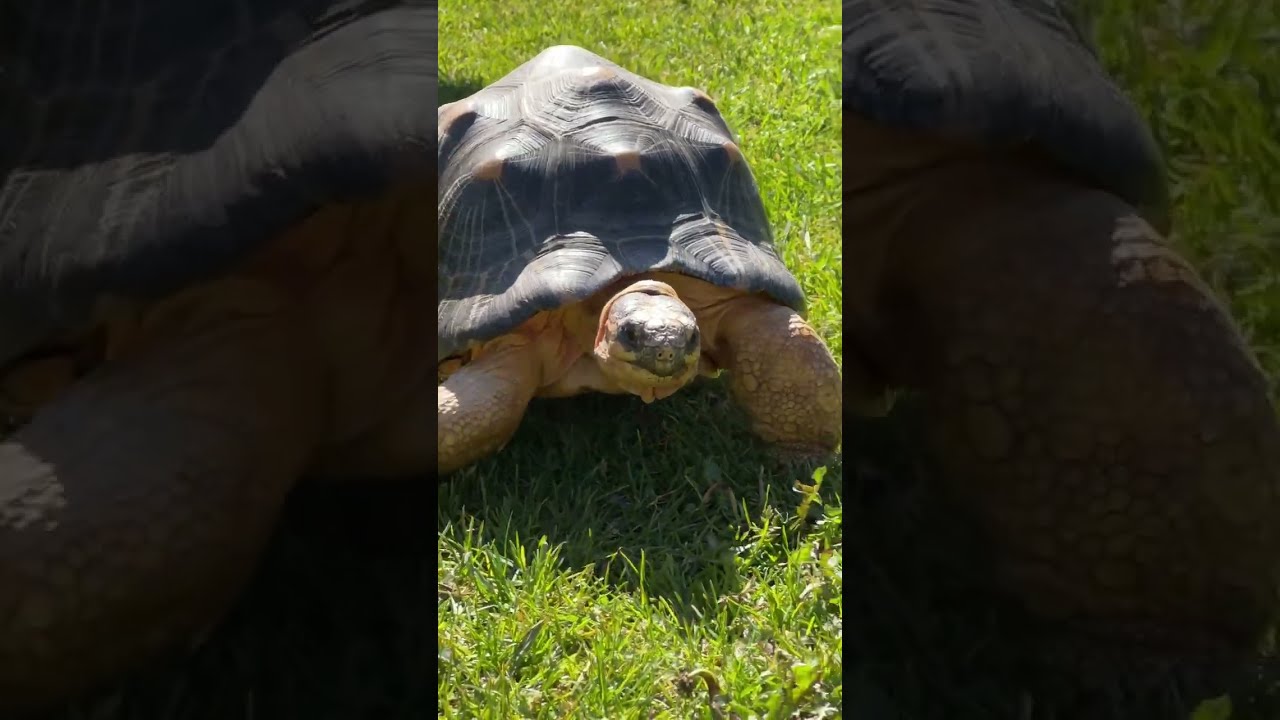– An exploration of the natural history and conservation efforts for the endangered Radiated Tortoise.
– Insights into the challenges and rewards of managing outdoor zoo adventures that feature rare species.
– The role of public engagement and educational programs in wildlife conservation.
Radiated Tortoises, scientifically recognized as Astrochelys radiata, serve as one of the most striking examples of the biodiversity endemic to Madagascar. These creatures are renowned for their distinctive shell pattern, marked by star-like radiations that have fascinated wildlife enthusiasts and conservationists alike. Unfortunately, their beauty has also placed them in peril, making them targets for illegal pet trade and pushing them towards the brink of extinction. This article delves into the captivating journey of a pair of endangered Radiated Tortoise siblings at an outdoor zoo adventure, spotlighting crucial aspects of zoology, zoo management, and wildlife conservation.
Zoological parks and outdoor adventures are pivotal in bringing humans closer to nature, offering immersive experiences that foster appreciation and understanding of wildlife. When it comes to endangered species such as the Radiated Tortoise, these encounters are not only about marveling at their exotic appearances but also serve as a powerful tool for conservation education. The firsthand experience of seeing and sometimes interacting with these creatures under expert guidance can leave a lasting impact, promoting a deeper sense of responsibility toward biodiversity preservation.
Managing outdoor zoo adventures, especially those featuring endangered species, requires a delicate balance between accessibility and the welfare of the animals. This aspect of zoo management involves rigorous planning to create environments that mimic the species’ natural habitats as closely as possible. For the Radiated Tortoise siblings, this means replicating the dry forests of southern Madagascar within the confines of the zoo. Experts ensure that the enclosure’s temperature, humidity, and foliage closely resemble the tortoises’ native ecosystem, providing them a sanctuary that supports their health and wellbeing. Additionally, dietary needs are meticulously attended to, simulating the foraging experiences these tortoises would encounter in the wild, with a varied diet of grasses, fruits, and vegetables.
Public education and engagement are the cornerstone of wildlife conservation, particularly for those under threat, like the Radiated Tortoise. Outdoor zoo adventures are phenomenally positioned to bridge the gap between abstract conservation concepts and tangible action. Through guided tours, informative signage, and interactive sessions, visitors gain insights into the critical status of the Radiated Tortoises and the factors contributing to their endangered status – including habitat destruction, the illegal pet trade, and climate change. This interactive approach nurtures a connection between the visitors and the tortoises, inspiring a collective consciousness towards environmental stewardship and the measures necessary to protect such precious life forms.
Behind the scenes, conservation efforts extend beyond the display enclosures. Many zoological parks involved in endangered species management participate in captive breeding programs, aiming to bolster the dwindling populations of species like the Radiated Tortoise. These programs blend science and dedicated care, where zoo professionals collaborate with international conservation entities to share data, genetic material, and best practices. The success of these initiatives often hinges on the genetic diversity maintained within the captive populations, ensuring that any future reintroduction plans into the wild bear the best possible chance of sustainability.
Education programs tailored for all ages complement the conservational ethos of these outdoor zoo adventures. By embedding educational content into every aspect of the visitor experience, from casual observation to structured learning activities, zoos cultivate a knowledgeable base of well-informed supporters about the plight of endangered species and the actions required to mitigate these challenges. These programs empower individuals with the knowledge to make lifestyle choices that support conservation efforts, such as advocating for wildlife-friendly policies and practicing sustainable consumption habits.
Outdoor zoo adventures with endangered Radiated Tortoise siblings encapsulate the essence of modern zoological endeavors – blending education, conservation, and research. The active participation of the public in these adventures does not merely serve as an enlightening experience. Still, it acts as a catalyst for change, inching closer to harmonious coexistence between humans and the myriad forms of life sharing this planet. Through strategic management, focused conservation initiatives, and immersive educational programs, these experiences underscore the critical role of informed community engagement in safeguarding our natural heritage for generations to come. Witnessing the delicate steps of the Radiated Tortoises amidst the verdant enclosure, visitors leave with a profound understanding of the interconnectedness of all living beings and the urgent need to protect such irreplaceable wonders.
*****
Source Description
With warmer temperatures, it’s time for outdoor zoo adventures with Jumbo Jet and Cessna, our 30-year-old endangered radiated tortoises! 🐢 The slow but adorable lawnmowers were busy grazing on dandelions and grasses. 🌼


